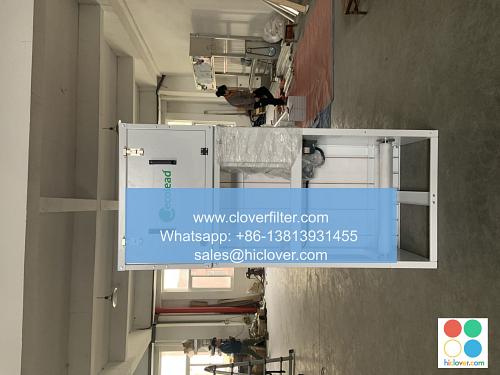Air Filter Sizing: A Guide for Small Commercial and Industrial Buildings

Proper air filter sizing is crucial for maintaining good indoor air quality (IAQ) and ensuring the efficient operation of heating, ventilation, and air conditioning (HVAC) systems in small commercial and industrial buildings. Air filter selection and sizing involve several factors, including the type of application, airflow rates, and pressure drop requirements. In this article, we will highlight various application areas and provide a comprehensive guide on air filter sizing for small commercial and industrial buildings.
##
Understanding Air Filter Types and Applications
Air filters are designed to capture airborne contaminants, such as dust, pollen, and other particles, to improve IAQ and protect HVAC equipment. There are several types of air filters, including:
* Pleated air filters: These filters are commonly used in commercial and industrial applications due to their high efficiency and low pressure drop.
* Activated carbon filters: These filters are used to remove gases, odors, and volatile organic compounds (VOCs) from the air.
* HEPA filters: These filters are designed to capture 99.97% of particles as small as 0.3 microns and are often used in pharmaceutical, food processing, and healthcare applications.
##
Factors Affecting Air Filter Sizing
Several factors must be considered when sizing air filters for small commercial and industrial buildings, including:
* Airflow rates: The volume of air that needs to be filtered, typically measured in cubic feet per minute (CFM).
* Pressure drop: The resistance to airflow caused by the filter, which can affect the efficiency and lifespan of the HVAC system.
* Filter efficiency: The ability of the filter to capture airborne contaminants, measured by its minimum efficiency reporting value (MERV) rating.
* System design: The type and configuration of the HVAC system, including the location and size of the air handling units (AHUs) and ductwork.
##
Application Areas for Air Filters
Air filters are used in a variety of application areas, including:
* Commercial offices: Air filters are used to improve IAQ and reduce the risk of airborne illnesses.
* Industrial manufacturing: Air filters are used to remove airborne contaminants and protect equipment from damage.
* Food processing: Air filters are used to maintain a clean and sanitary environment, reducing the risk of contamination and spoilage.
* Healthcare facilities: Air filters are used to provide a clean and safe environment for patients, visitors, and staff.
##
Best Practices for Air Filter Sizing and Selection
To ensure proper air filter sizing and selection, follow these best practices:
* Consult the manufacturer’s specifications: Ensure that the selected air filter meets the manufacturer’s recommended specifications for airflow rate, pressure drop, and filter efficiency.
* Conduct regular maintenance: Regularly inspect and replace air filters to ensure optimal performance and extend the lifespan of the HVAC system.
* Consider energy efficiency: Select air filters with low pressure drop and high efficiency to minimize energy consumption and reduce operating costs.
In conclusion, air filter sizing is a critical aspect of maintaining good IAQ and ensuring the efficient operation of HVAC systems in small commercial and industrial buildings. By understanding the different types of air filters, factors affecting air filter sizing, and application areas, facility managers and HVAC professionals can make informed decisions when selecting and sizing air filters. Remember to follow best practices for air filter sizing and selection to ensure optimal performance, energy efficiency, and a clean and healthy indoor environment. Prompt

